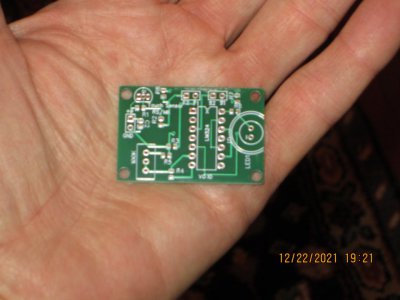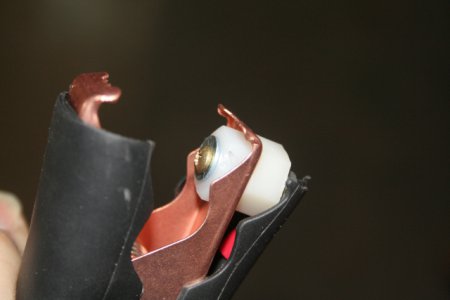- Joined
- Jul 28, 2017
- Messages
- 2,565
I've been thinking about making something like this. It also could be used as an edge finder, perhaps handy if you don't want to remove your cutter. You'd want the work surface and cutter to be free of swarf so you're finding the actual work surface.
The circuit is pretty old-school, but the IC still is available -- Jameco has them for $.49 apiece. Any quad opamp that works with a 9V supply and has low offset should work. By "low offset" I mean 2 millivolts or less. Many modern opamps go down into the microvolt range so that requirement is not particularly demanding by current standards. However, the circuit does depend on the "long" leg of the circuit formed by the path from the cutter, through the spindle and down to the body, to be at least 2 ohms. Going with a better opamp may be necessary if the path for a particular machine is less than that.
The device uses super-magnets attached to spade connectors so you can experiment with different locations on your machine to see what works best.
The circuit is pretty old-school, but the IC still is available -- Jameco has them for $.49 apiece. Any quad opamp that works with a 9V supply and has low offset should work. By "low offset" I mean 2 millivolts or less. Many modern opamps go down into the microvolt range so that requirement is not particularly demanding by current standards. However, the circuit does depend on the "long" leg of the circuit formed by the path from the cutter, through the spindle and down to the body, to be at least 2 ohms. Going with a better opamp may be necessary if the path for a particular machine is less than that.
The device uses super-magnets attached to spade connectors so you can experiment with different locations on your machine to see what works best.






